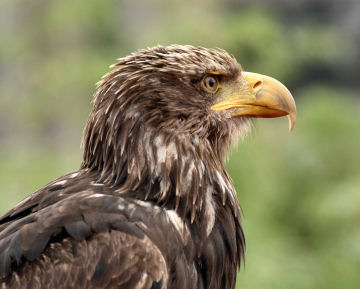It’s not brawn but brains that matter in the rise of crime families among birds.

That’s one of the conclusions from a study of traits shared by families of bird species notorious for stealing food, says Julie Morand-Ferron of the University of Québec in Montréal.
The propensity to pilfer turns up in some lineages of birds more than in others, and ideas abound about what bird features typically accompany thievery and might have favored its evolution. Morand-Ferron and her colleagues tested proposed criminal profiles by analyzing 856 reports in the scientific literature of bird-on-bird food snatching.
Having a big body by itself didn’t turn out to be strongly associated with thievish families. But having a larger than usual brain for a particular body size did appear to be a suspicious trait, Morand-Ferron and her colleagues report in the December Animal Behaviour.
“I was amazed at the amount of data mining that they did to come up with this,” says David Shealer of Loras College in Dubuque, Iowa. “It’s a study that nobody wants to do, but it needed to be done.”
Morand-Ferron says that she started the project after watching Carib grackles in Barbados sneaking dry dog food out of unattended bowls and then deftly snatching pellets from each other. She searched out other accounts of food theft, or kleptoparasitism, and accumulated abundant data even when she limited her search to birds stealing food out of the immediate possession of another bird species. She read about thieves’ acrobatic midair grabs, zigzaggy chases, and harassment of a successful hunter until some of the booty was regurgitated for the thief.
Out of the world’s 9,672 known bird species, 197, or about 2 percent, have criminal records for swiping food from another species, Morand-Ferron says. Among certain bird families, such as falcons, eagles, and pelicans, kleptoparasites number far more than 2 percent of the species. Others, especially songbird families such as kinglets, count a smaller percentage among their kin.
The researchers took into account biases arising from kleptoparasites’ shared lineages or from the fact that some families have been particularly well studied.
Overall, the feathered thieves tend to include other vertebrates in the menu, Morand-Ferron says. A fish or mouse, for example, yields a sizable meal well worth stealing, but requires a considerable effort to chase down.
The species of kleptoparasitic families also tend to live in open habitats such as ocean shores, where they can easily spot their marks.
The results of the analysis make sense, particularly the emphasis on brains over body size, says Shealer, who has studied food theft among roseate terns. He has seen terns rob larger species, and he has seen outright trickery—a female tern that flirted with fish-carrying males only long enough to sidle close to grab their food. So he welcomes new respect for kleptoparasites.
“There’s this stigma attached to individuals who steal things to make a living: that they can’t catch fish or forage on their own,” he says. Among the terns he studied, the thieves “were far and away the best parents.”






